High-value datasets – greenhouse gas emissions in the EU
Find emissions data to support the green transition
This is part of a series of articles showcasing examples of high-value datasets from their different thematic categories. High-value datasets are defined by EU law based on their potential to provide essential benefits to society, the environment and the economy. This series aims to help readers find reliable and accurate information from official sources relating to the availability of various high-value datasets, and to present this information through data visualisation. You can check out the article providing an overview of high-value datasets here.
Only datasets specifically defined by law can be considered high-value datasets, and as such the data presented in the articles does not necessarily fall under that definition. Instead, the data has been chosen to be thematically adjacent to high-value datasets and to showcase what can be done with information made available by official EU bodies and EU Member States. The official list of high-value datasets adopted on 12 December 2022 can be found in the legal documents that define them and their characteristics.
Emissions data in the high-value datasets
Climate change is one of the defining issues of our time. To understand the progress towards a carbon-neutral society, high-quality data is paramount. This is one of the reasons why key metrics to track this effort were included in the list of high-value datasets as part of the ‘Earth observation and environment’ category.
Among them, there is data about greenhouse gas emissions. When released into the atmosphere, greenhouse gases trap heat from the sun, creating a natural ‘greenhouse effect’ that keeps our planet warm and habitable. However, human activities, particularly the burning of fossil fuels and deforestation, have significantly increased the concentration of greenhouse gases in the atmosphere. This increased concentration intensifies the greenhouse effect, causing the Earth’s temperature to rise.
There are various ways to track greenhouse gas emissions. As noted in the complete list of high-value datasets, the legal acts laying down the key variables for the emission indicators are Articles 24, 32, 55 and 72 of Directive 2010/75/EU, Article 21 of Directive 2012/18/EU and Article 10 of Council Directive 91/676/EEC.
As is the case for most other datasets in this list, emissions high-value datasets must be available for reuse under the conditions of the Creative Commons Attribution 4.0 International licence, or any equivalent or less restrictive licence, in a publicly documented machine-readable format and through application programming interfaces and bulk download. The aim is to make them as accessible and easy to use as possible.
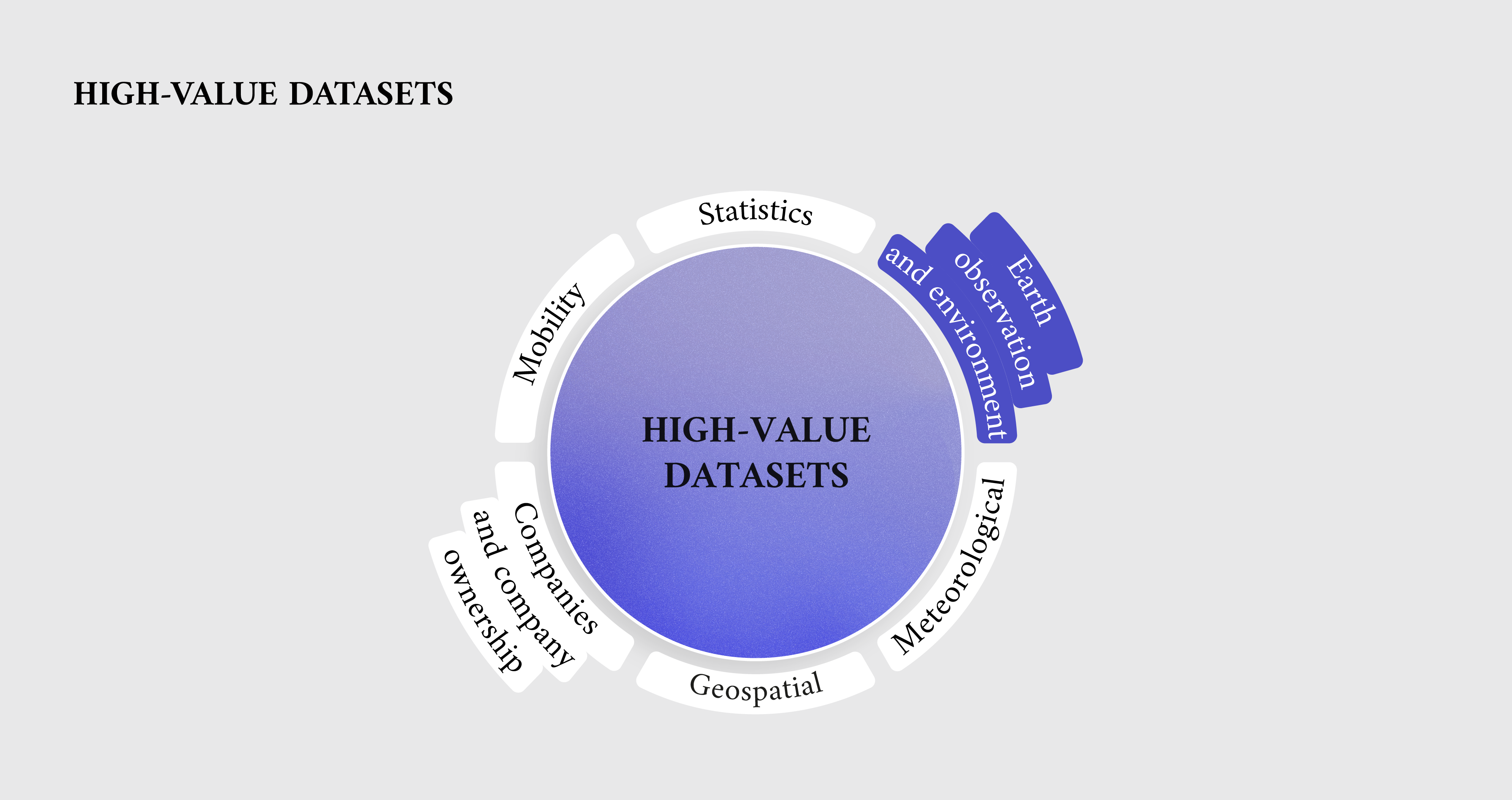
The ‘Statistics explained’ page on the Eurostat website provides a good starting point for any research concerning climate change data. It describes key trends, targets and the best indicators to use for tracking progress towards the sustainable development goals in the EU context.
One such indicator, and among the most important to consider, is the metric that measures the abovementioned greenhouse gas emissions. The net greenhouse gas emissions indicator tracks both emissions and carbon removal, which counterbalances emissions. In short, carbon removal refers to the process of extracting CO2 from the atmosphere or reducing its concentration. It involves various techniques such as planting trees and restoring forests to absorb and store CO2 through photosynthesis, among other techniques. By removing CO2 from the atmosphere, carbon removal aims to restore the balance of carbon cycles, stabilise global temperatures and mitigate the adverse effects of excess greenhouse gases on the environment and human well-being.
As for the net greenhouse gas emissions metric, under the European Green Deal initiative, the European Commission proposed in September 2020 to raise the target for reducing greenhouse gas emissions by 2030. The new target is to decrease emissions by at least 55 % compared to the levels in 1990. Long term, the EU aspires to achieve climate neutrality by 2050, which entails establishing an economy where there is balance between greenhouse gas emissions produced and greenhouse gas emissions taken out of the atmosphere (resulting in no net greenhouse gas emissions). This goal lies at the core of the European Green Deal and aligns with the EU’s dedication to international climate initiatives outlined in the Paris Agreement.
Data on net greenhouse gas emissions is compiled at the EU aggregate level and for all Member States by the European Environment Agency (EEA) and republished by Eurostat. It has several breakdowns available, which makes it possible to study per capita emissions and in each Member State. Going as far back as 1990, the following visualisation shows the ongoing effort in reducing greenhouse gas emissions.
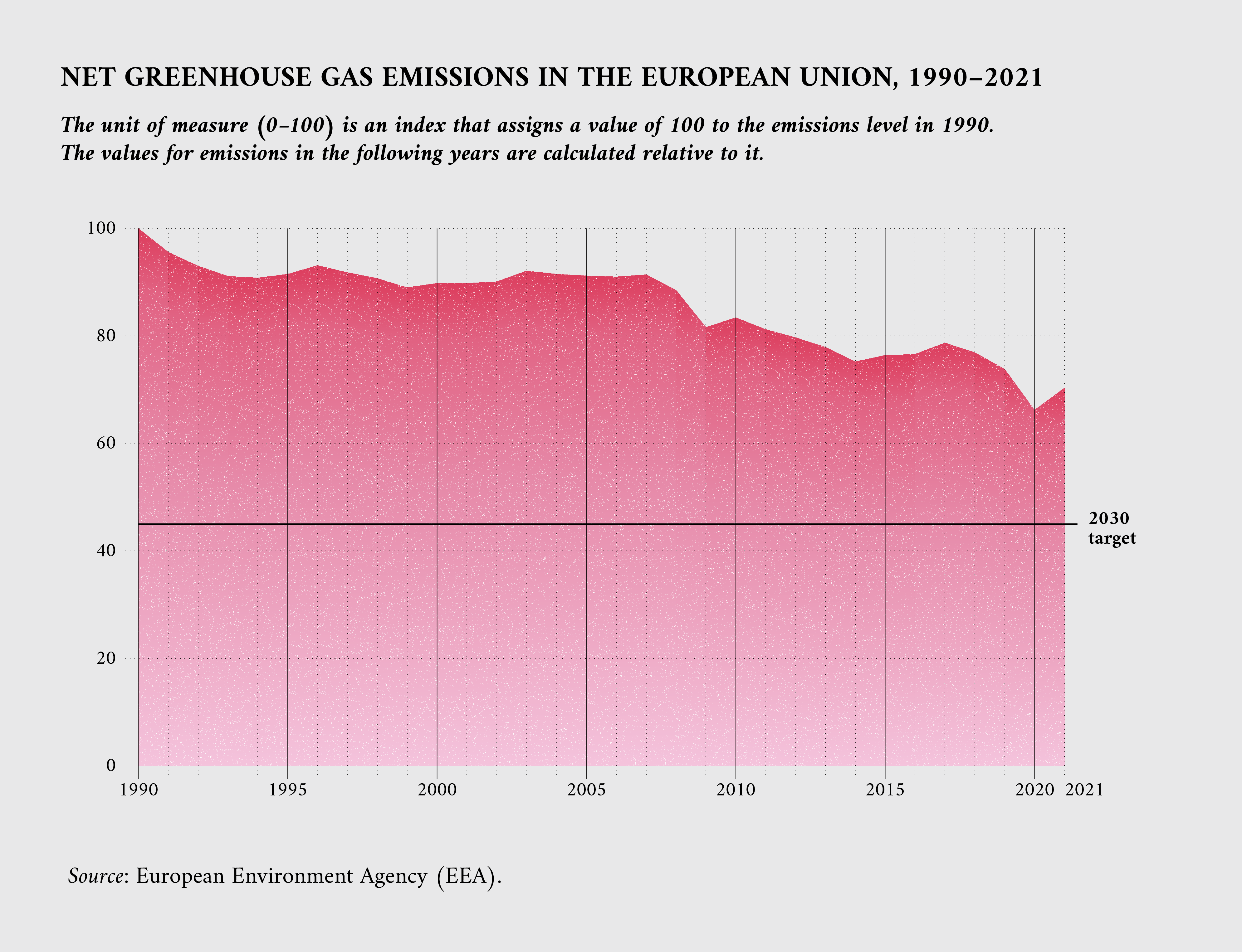
Another important factor to note is the effect of the COVID-19 pandemic, which strongly reduced human activity in 2020 and led to a drop in emissions. In 2021, with the acute phase of the pandemic gradually concluding, greenhouse gas emissions tended to reverse back.
The following visualisation looks at levels of greenhouse gas emissions in tonnes per capita from 1990 to 2021. In this measure, over the years, on average all EU-27 Member States experienced a decline in their emissions. It ranged from – 4 % and – 6 % for Finland and Cyprus, to – 65 % and – 77 % for Romania and Sweden, respectively, as compared to 1990. In contrast to this average EU trend, the carbon intensity of Latvia’s economic output increased by 37 %, which can partially be explained by significantly lower initial levels.
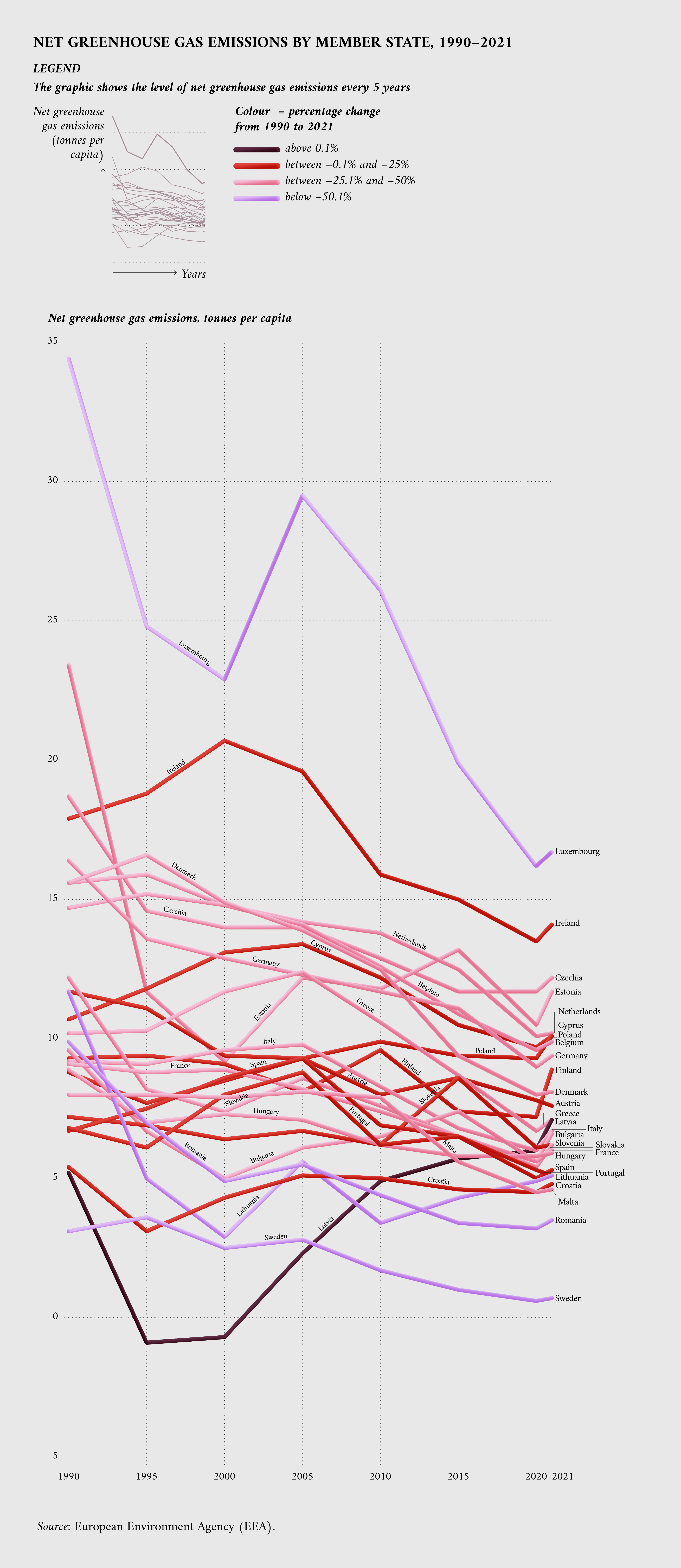
At the same time, the per capita emissions within Member States exhibit significant variation owing to their unique geographical, economic and energy-related circumstances. For instance, although Latvia experienced a rise in its per capita emissions, reaching 7.1 tonnes per resident, it still remains lower than the EU-27 average of 7.4 tonnes as of 2021. In contrast, countries such as Luxembourg have managed to halve their per capita emissions since 1990, but starting from a higher initial level, their emission levels currently stand at 16.7 tonnes per inhabitant.
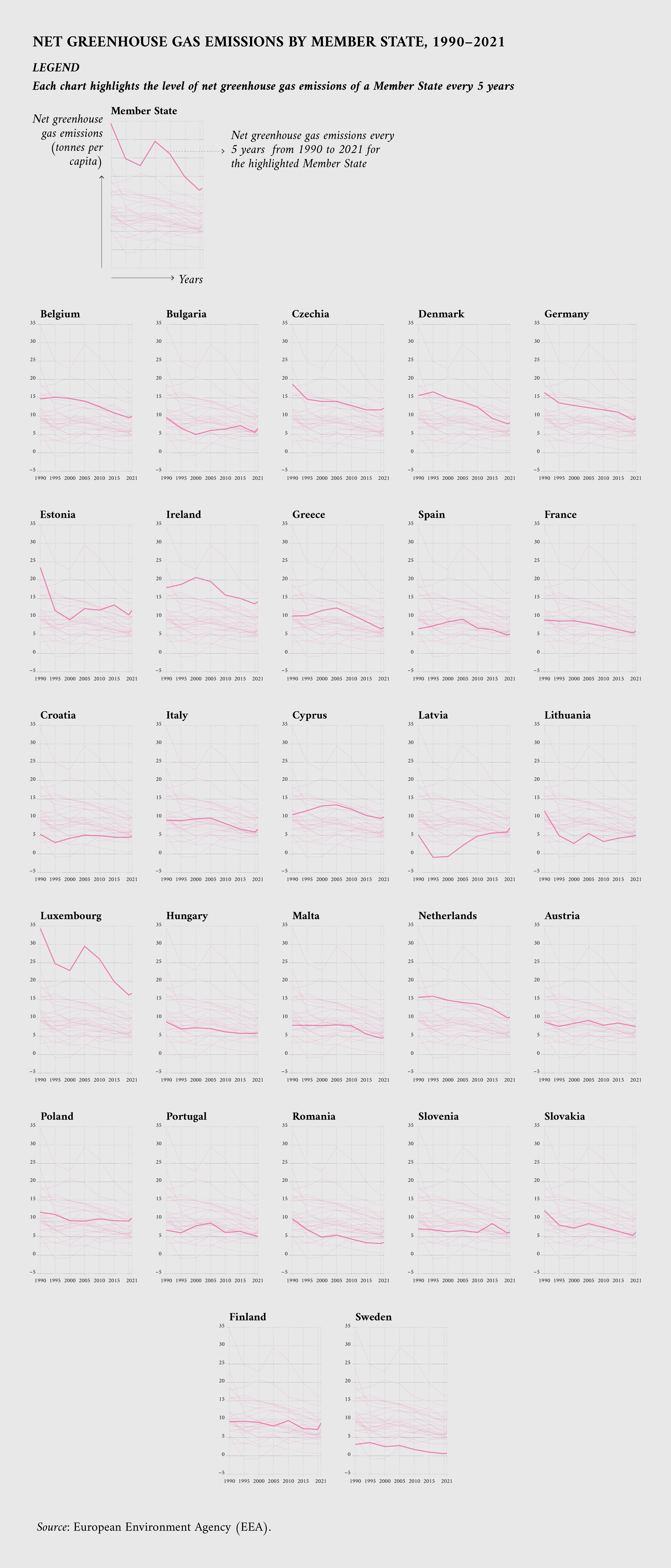
Emissions data from data.europa.eu
The data.europa.eu portal makes available many datasets useful for analysing greenhouse gas emissions in more detail also on a national level. The Dutch government data portal, for example, uploaded a dataset concerning emissions in the Netherlands by economic sector, showing which parts of the economy are the most carbon intensive. The data is very detailed, showing the contribution of private households together with other parts of the economy and specific economic sectors with a significant impact, such as manufacturing (especially of coke, petroleum and chemicals), electricity and gas supply or air transport.

Several datasets on the portal allow for a regional coverage of emissions. One example is a dataset made available by the Belgian Federal Planning Bureau, showing per capita net greenhouse gas emissions since 2000 in the three regions of the country.
The following visualisation shows the trend in emissions in those regions. The original dataset, however, also includes other useful information such as the 2030 objectives, a comparison with the EU-27 levels and a longer time series going as far back as 1990.

Another useful feature of the datasets available on the data.europa.eu portal is that they can offer a very detailed level of geographic coverage. That is the case for a dataset uploaded by authorities in Vienna, tracking greenhouse gas emissions in the area, and others such as the dataset concerning Umeå, a city in the north east of Sweden.
Going back to 1990 and up to 2019, as shown in the following visualisation, the data about the Austrian capital is also disaggregated by sectors showing emissions for agriculture, buildings, energy supply, fluorinated gases, industry, transport and waste management.
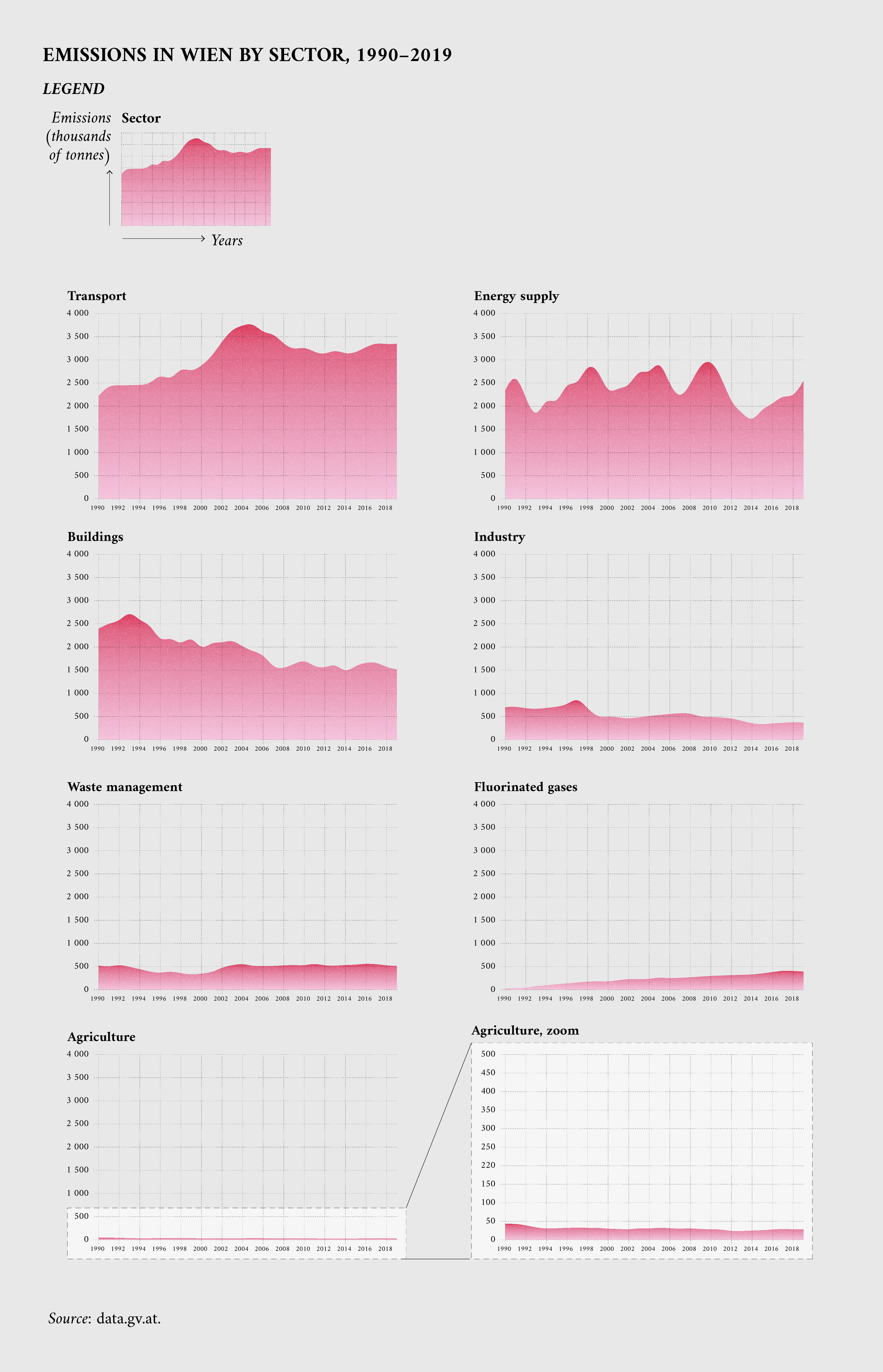
Other EU greenhouse gas data providers
The EEA is the EU agency responsible for providing reliable and independent information on the environment. It collects and validates data from reliable sources to analyse trends and produce policy-relevant analyses on environment and climate topics. The EEA’s ‘Indicators’ page offers several indicators about climate change adaptation and mitigation, while underlying datasets can be downloaded from the datahub or the EEA catalogue on data.europa.eu.
The EU’s Joint Research Centre has conducted several research projects about the environment and climate change. Among them, there are different examples of studies focused on greenhouse gas emissions, such as this one focused on predictors for cities’ emissions.
On the Directorate-General for Climate Action’s website, it is also possible to find documents, reports and data about policy action concerning climate change in all its aspects: the European Green Deal, transport emissions, along with carbon capture, use and storage as a way to offset emissions.
Download the data visualisations presented in this article and the data behind them.
Article by Davide Mancino
Data visualisations by Federica Fragapane
